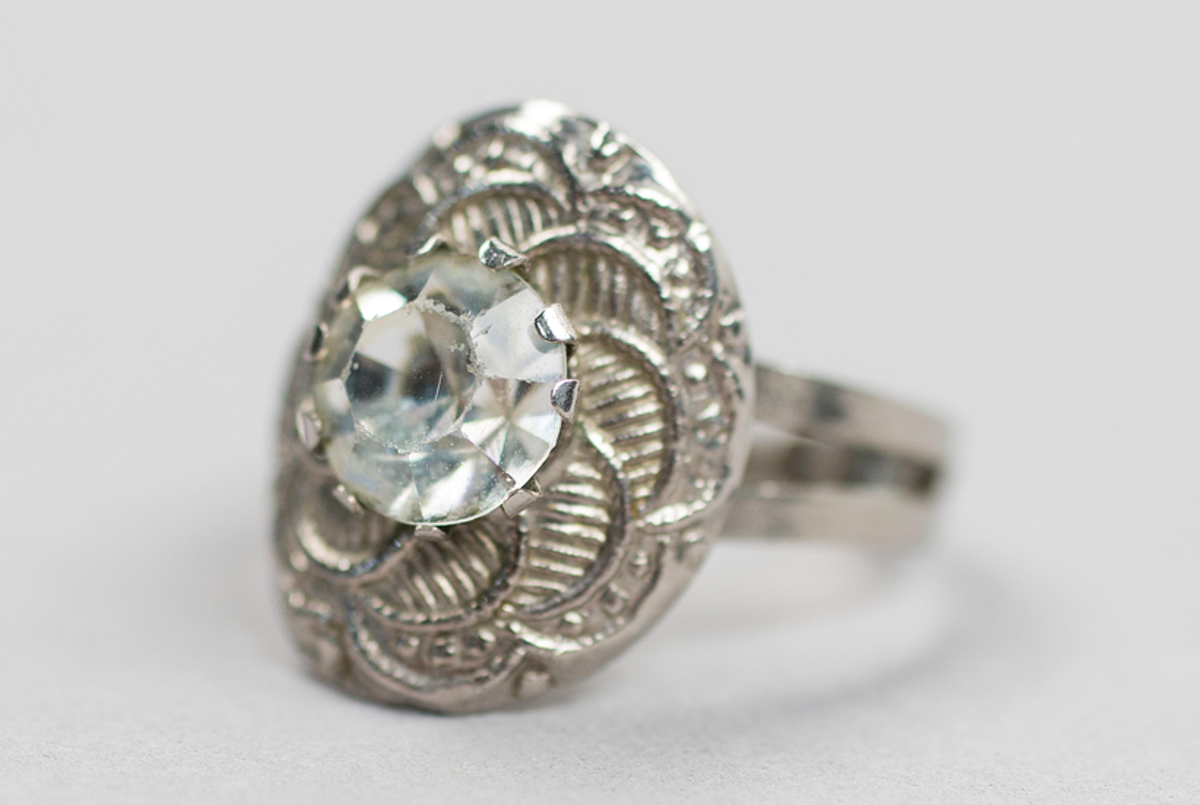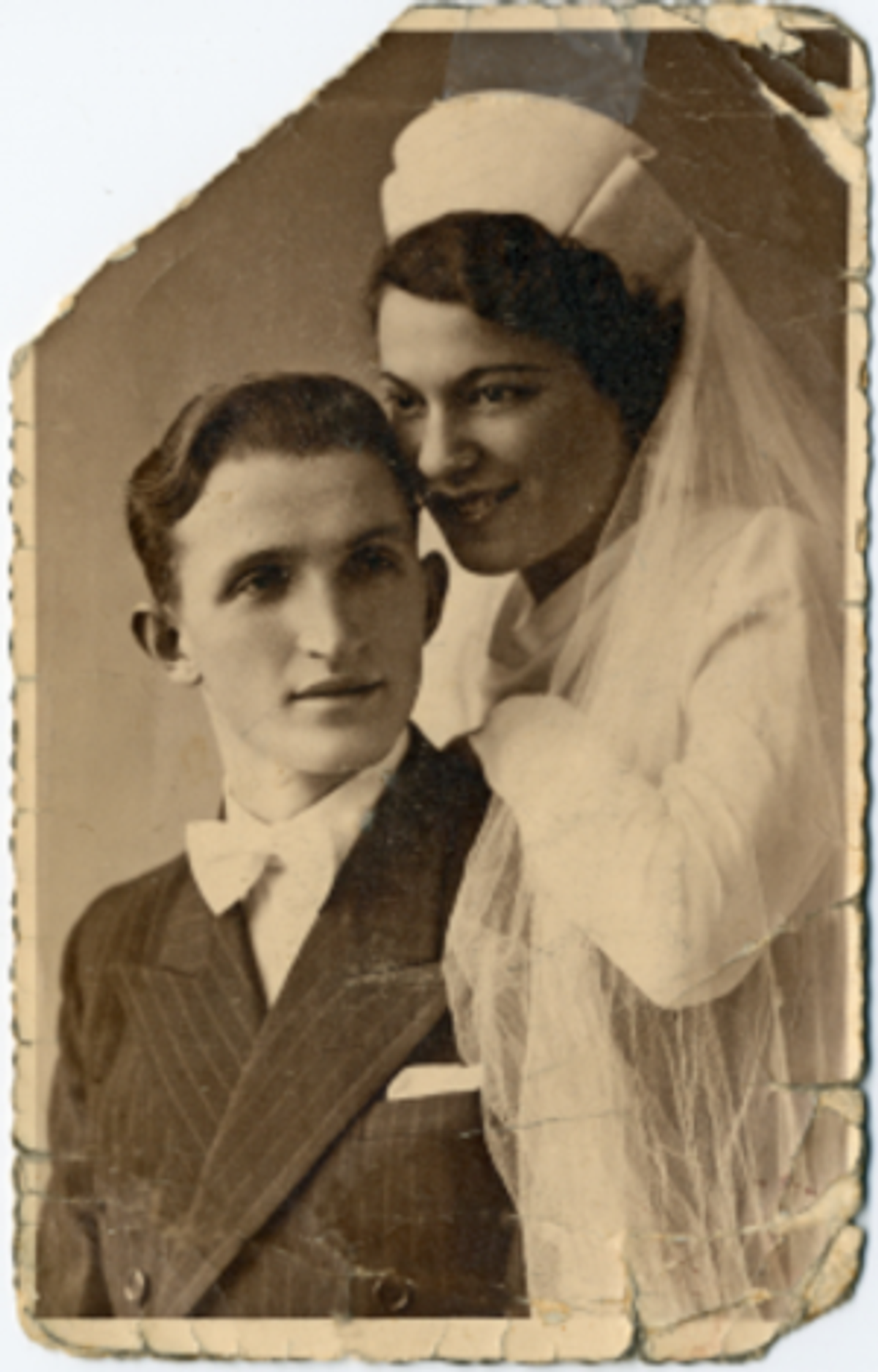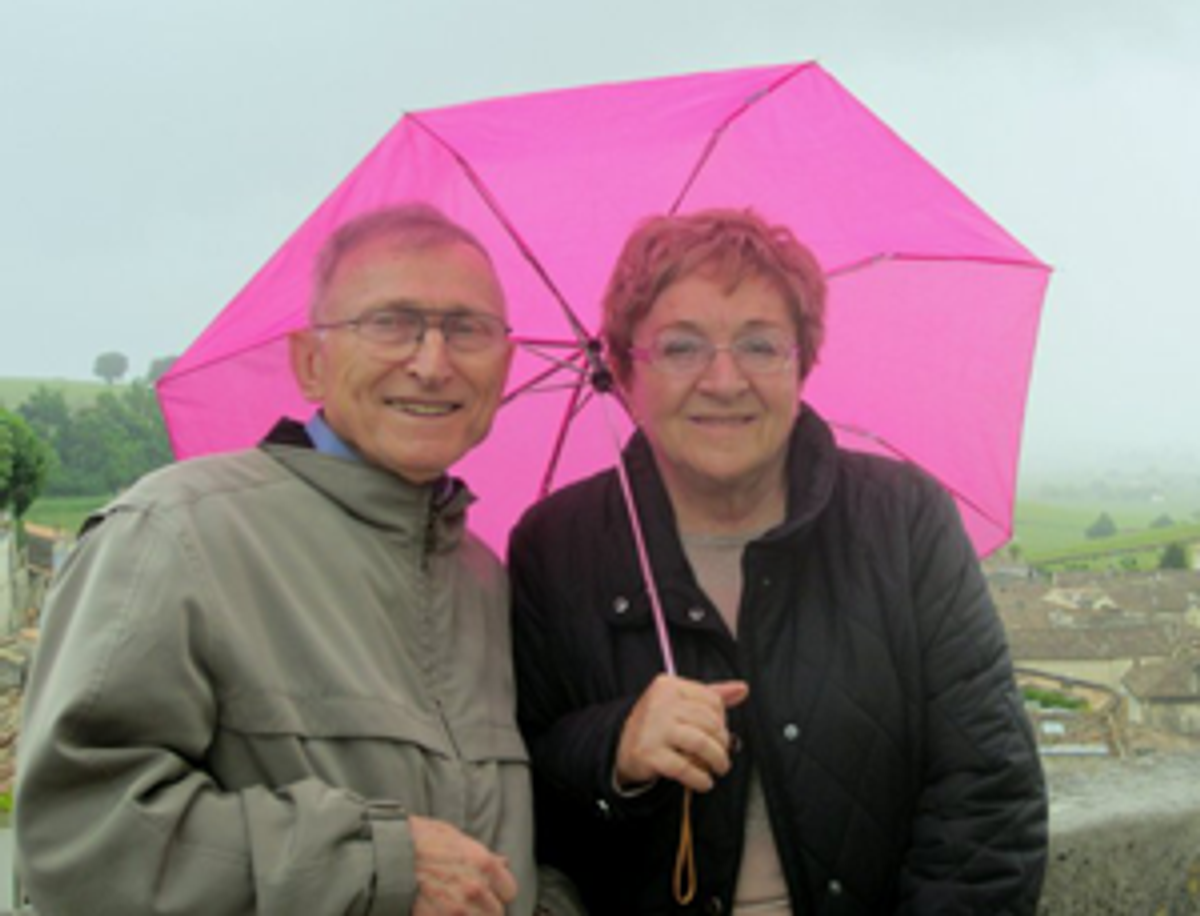
Inside a tiny box in a temperature-controlled, locked cabinet at the United States Holocaust Memorial Museum, there is a ring. It is not particularly beautiful, and in purely monetary terms, it is not particularly valuable. But behind this ring is a beautiful story of survival of Jews living under Nazi occupation—people for whom the ring’s value proved incalculable.
When WWII broke out, Abraham “Bumek” Gruber was a cattle merchant and butcher in Drohobycz, a small town—now part of Ukraine, but then part of Poland—that was then home to some 14,000 Jews. The town, whose Jewish history dates back to at least the 15th century, fell under Soviet control in 1939. But two years later, the Nazis invaded; killing squads arrived, murdering 400 Jews on the streets in a pogrom. The rest of the Jews of Drohobycz were ultimately forced into a ghetto. While it was technically an open ghetto with no fences, Jews were not allowed to leave. May 21, 1943, marked the final liquidation of the ghetto; the Germans declared the town Judenrein, cleansed of Jews. But roughly 400 Jews hid in the forest or other hiding places and survived.
Bumek was one of them—thanks, in part, to the ring.
Handsome and likable, Bumek was known for his intelligence and resourcefulness. As a reservist in the Polish cavalry, he was called up for active duty in 1939. But when his unit soon disbanded because of the German advancement, he walked the 250 miles back to Drohobycz, his hometown. According to his nephew, Marcel Drimer, Bumek survived on his quick wit as he pretended to be Polish or Ukrainian, working for food and shelter along the way, in order to make it back home to his extended and close-knit family, which in part included his parents, his sister Laura, her husband Jakub, and their children Marcel and Irena.
Bumek also had his own daughter, Liba, with his wife, Blimka. After the German invasion, they first lived under Nazi occupation and were then forced to live in the ghetto, where food was scarce and Jews were frequently targeted by Nazi “aktions,” where they were loaded onto freight trains bound for concentration or death camps. One day, during yet another brutal aktion—where Nazis would enter Jewish homes, sometimes looting or simply destroying anything belonging to Jews, before rounding them up for deportation—Bumek watched as German soldiers broke a chandelier. As the crystal pieces flew across the room and landed on the floor, Bumek had an idea. He gathered some of the broken pieces of the chandelier and asked a jeweler to make him a ring—a fake diamond ring, made out of nickel with a crystal cut like a diamond—just in case.

Bumek was considered lucky when, in 1943, he was moved from the ghetto to work as a butcher for the SS at the Galicia oil refinery camp, where he lived in a labor camp with Blimka and Liba. His sister Laura and her family were hiding in a nearby town, Mlynki Szkolnikowe, at the home of Jan and Zofia Sawinski—who had been friendly neighbors when Laura and Bumek were growing up—and their four children. Food was rationed but the Sawinskis’ 12-year-old son, Tadek, would bring table scraps home for their livestock, secretly giving it to their guests, who included two other Jewish families—10 people in all—hidden in the attic under the thatched roof or in a small hole under the dirt floor. Marcel, who was 9 years old when he was in hiding at the Sawinskis’ with his parents and 7-year-old sister Irena, told me: “Sometimes, Bumek secretly gave Tadek some meat or bread to bring to all of us, which was very dangerous.”
One day when Bumek was at work, someone informed him that his wife and child had been put on a truck with other Jews and taken to the forest. Because Bumek had befriended some German officers by giving them better cuts of meat, one of them took him by motorcycle to rescue Blimka and Liba; family members of “essential workers” like Bumek were considered protected. But as they approached the forest, Bumek saw only the empty truck. When he looked inside, there was the clothing of the dead, among which he found Liba’s little shoes. His wife and daughter had been executed.
Bumek lost his will to live. But a few weeks later he saw a little 4-year-old girl, Fela, who was about the same age as his beloved Liba, playing alone on the ground in the labor camp. He took her by the hand and asked, “Where is your mother?” Fela brought him to her mother, Tusia Schindler, who was a seamstress working for the Nazis at the camp. He yelled at Tusia, imploring her, “Never let your child stay alone! They will take her and murder her!” Bumek and Tusia began to talk and exchanged their stories. Tusia’s husband, Gedalko, had been mobilized by the Soviet army but she heard he was taken prisoner by the Germans. Because it was widely reported that the Germans immediately killed Jewish POW’s, Tusia assumed he was dead. Both presumably widowed, Tusia and Bumek became very close.
At one point, one of the Nazi wives for whom Tusia was sewing dresses told Tusia in a demanding tone that she had to finish by a certain date. It was a clear sign that the next aktion was coming. The Nazi wife’s reductionist logic was indescribably sickening: How would the dresses be made if the seamstress was to be liquidated?
Bumek knew he, Tusia, and Fela had to leave immediately.
At nighttime, Bumek brought Tusia and Fela to the Sawinskis’ house in Mlynki Szkolnikowe. Jan Sawinski was expecting Bumek, but he was startled to see Tusia and refused to take an additional person; he didn’t even know about little Fela, who was hidden in a wagon under a cover of hay. Bumek had already lost his wife and daughter. He was not going to allow something like that to happen again. It was at this critical point that Bumek said, “Listen, I have a diamond ring that I want to give you.”
He pleaded with Jan, hoping he would take the ring in exchange for hiding them. But Jan wasn’t convinced, saying only that he wanted to have something to eat and some vodka and that he would sleep on it.
The next morning Jan came to Bumek and said: “Last night I dreamed of Jesus Christ and he told me that I have to rescue you.” Bumek was relieved and introduced him to Fela. Sawinski laughed and said, “Whatever it is, I’m going to take care of you.” Sawinski also mentioned that his cow just died. “So it’s great that you gave me the ring,” he told Bumek happily, “so I can sell it to buy a cow to feed you all!”
Bumek froze. He knew that if Jan tried to sell the ring, and it was discovered that the ring was made of nickel, the “stone” was made of glass, they might all be killed. Bumek just had to convince him not to sell it without letting him know it was a fake. Boldly he pleaded: “Please, you cannot sell it. This ring is an heirloom in my family for generations. Wait until after the war. I promise when the Russians come in—and they’re not so far away—I will buy you the most beautiful new cow.”
That winter, 13 Jews hid in the Sawinskis’ safe house. The Soviet Army liberated the region on Aug. 7, 1944, and they were free. Bumek kept his word and bought Jan a beautiful cow, and Jan returned the ring to its clever owner.
Jan and Zofia Sawinski and their four children were all later honored by Yad Vashem as Righteous Among the Nations for saving 13 Jewish lives.
Bumek and Tusia married. When she was several months pregnant with Bumek’s child, Tusia’s first husband Gedalko came to find her. Bumek and Tusia were shocked to find he had survived; he had in fact been captured by the Italians, not the Germans, which explained why he had not been killed. According to Marcel, Tusia loved both men, but together they decided that Tusia would stay with Bumek. There was no animosity and they were able to remain friends. Bumek and Tusia lived in Poland until 1957 and eventually moved to Israel.
After Tusia died in 1967, Bumek later married his third wife, Mania, to whom the ring passed. Bumek died in the early 1990s, and when Mania died a few years ago, Irena contacted the family. “When you take Mania’s jewelry to be appraised,” she said, “the one item that is worth nothing is the one I want.”
The phony ring that saved them was donated to the Holocaust Museum in 2013 by siblings Marcel Drimer and Irena Wysoki, who lives in Israel.

Teresa A. Pollin, a Polish-born curator in the museum’s arts and artifacts department, was instrumental in acquiring it. She has known Marcel and Irena for more than a decade. “I know how detail-oriented they are,” Pollin told me, adding that “each time I had questions about any part of the story, historians came to the rescue” and backed up the family’s tale. “There is not a shred of doubt in my mind regarding the veracity of the story,” she concluded.
“The ring is important,” Pollin explained, “because it’s a symbol of ingenuity and a deep understanding of the horrid fate prepared by Germans for the Jews.”
Today Marcel is in his 80s and lives in Virginia. He and his wife Ania are long-standing volunteers at the museum, where Marcel lectures regularly on his life and survival in Drohobycz. He is still in touch with the grandchildren of the Sawinski family.
“The ring saved us all. It was one of the many miracles that helped us survive,” said Marcel. The ring, he added, “helps all people understand how tenuous life and survival was at that time.”
***
Like this article? Sign up for our Daily Digest to get Tablet Magazine’s new content in your inbox each morning.
Jill Werman Harris has written for the New York Times, The Forward, and other publications. She is the author of Remembrances and Celebrations: A Book of Eulogies, Elegies, Letters and Epitaphs.
Jill Werman Harris has written for the New York Times, The Forward, and other publications. She is the author of Remembrances and Celebrations: A Book of Eulogies, Elegies, Letters and Epitaphs.